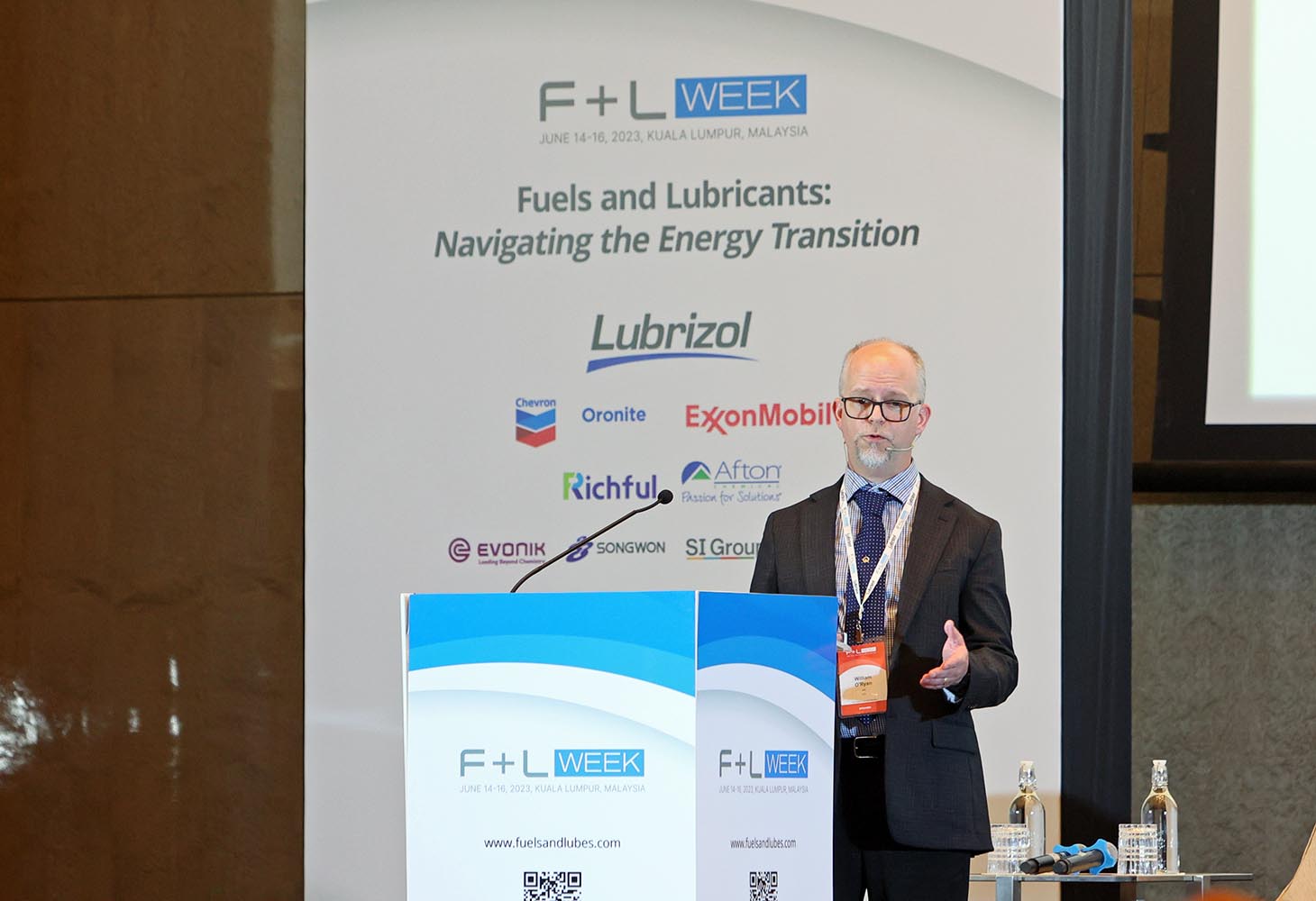
API appeals for industry support for ILSAC GF-7 and PC-12
With the exponential rise in electrification, it is understandable that resources are being diverted to new energy vehicles and future business opportunities. While speaking at F+L Week 2023 on June 14, Bill O’Ryan, senior manager, Engine Oil Licensing and Certification System (EOLCS) at the American Petroleum Institute (API) in Washington, D.C., U.S.A., made an appeal to the industry to continue to do “everything we can” to support OEM needs with the development of the next engine oil specifications, PC-12 and ILSAC GF-7. Combustion engines still dominate the vehicle parc, he says.
The Truck and Engine Manufacturers Association (EMA) have stressed the need for an update to the heavy-duty engine oil category to address tightening greenhouse gas emissions requirements following the U.S. Environmental Protection Agency’s final rule, “Control of Air Pollution from New Motor Vehicles: Heavy-Duty Engine and Vehicle Standards,” adopted on December 20, 2022. Light-duty vehicle OEMs have also outlined the importance of ILSAC GF-7, due to stringent fuel economy requirements and the status of carbon emissions.
O’Ryan made his appeal during a presentation on “Next Generation Engine Oil Standards” at the annual conference, held at the Four Seasons Hotel in Kuala Lumpur, Malaysia. During his presentation, the API representative provided an update on the progress of the two latest engine oil standards. A New Category Development Team is currently working on the replacement of the heavy-duty specifications, API CK-4 and FA-4, with first licensing for PC-12 targeted for the first quarter of 2027.
ILSAC GF-7 first licensing is planned for the end of the first quarter in 2025. Key changes include fresh oil MRV at 40,000cP; reductions in piston deposits in Sequence IIIH; fuel economy improvements; the addition of aged oil LSPI (low-speed pre-ignition) requirements and a reduction in chain wear. Sulphated ash will be added for the first time, enabling the use of gasoline particulate filters. There will also be the addition of a new oil gelation procedure which would replace the current engine oil filterability test method ASTM D6795.
O’Ryan also detailed a request from the International Lubricant Specification Advisory Committee (ILSAC) for support in the development of tests where components are in short supply or platforms are reaching end of life—such as the Sequence V, VI, IX and X test engines. Development of replacement tests is set to occur in parallel to category development. This is where it gets interesting. We are effectively decoupling engine test development from specification development, says O’Ryan.













